Every March, St. Augustine is bursting with Celtic pride. People from all over the world don their tartans and come to America’s oldest city to reconnect, celebrate, and learn about their Celtic heritage.
Throughout the two-day St. Augustine Celtic Music & Heritage Festival, celebrations include the popular Highland Games, Celtic musicians, meeting of the clans, Celtic food, vendors, and more.
There are several sites throughout the city that demonstrate the significant cultural influence Celtic regions have had on St. Augustine.
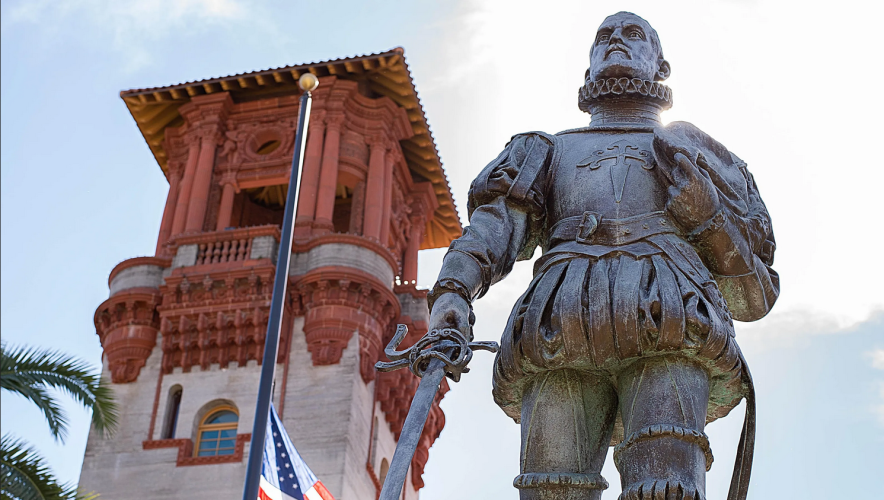
What place would be more fitting to start a Celtic journey through St. Augustine than by standing in front of the statue dedicated to Don Pedro Menendez, founder of St. Augustine and of Celtic heritage himself?
Menendez and the 800 colonists who originally accompanied him were from the town of Aviles and surrounding areas in the northern Celtic region of Spain. This not only makes St. Augustine the oldest city in the U.S. but also the oldest Celtic city in the U.S.
The statue itself, which stands outside the Lightner Museum and City Hall, is a replica of one in Avilés, Spain, and was given by the People of Avilés to St. Augustine, Florida.
Besides Florida’s first Spanish colonial governor Don Pedro Menendez, six more colonial Florida governors were of Celtic descent.
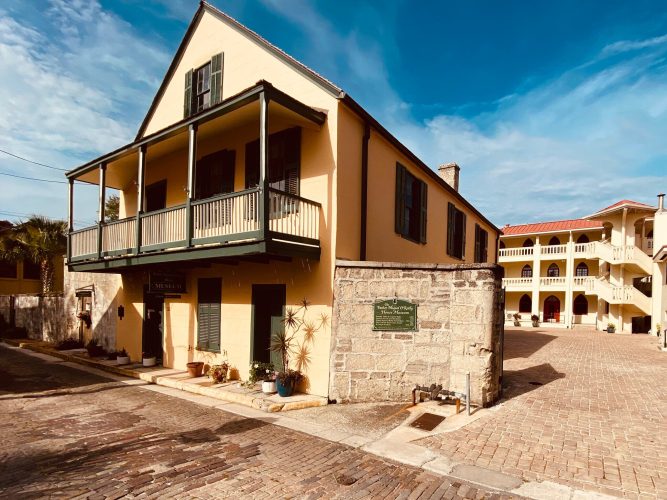
The Father Miguel O’Reilly House Museum was built during the first Spanish period and is one of the oldest structures in St. Augustine, situated in the oldest continuously settled neighborhood.
Made of tabby and coquina, the building was constructed in 1691 and purchased by Father Miguel O’Reilly in 1785. The Irish priest served under the Spanish crown and transformed the building into a place of spirituality and education to preserve old Catholic values.
The Father O’Reilly House was left to the Sisters of St. Joseph who have preserved the museum since 1866. Located on historic Aviles Street, the museum focuses on the history of the house, the Catholic tradition kept alive since 1565, and the story of the Sisters of St. Joseph.
This museum is rich in history and shows guests exactly how Saint Augustine looked in the days of Father Miguel O’Reilly. There is a beautiful garden and six rooms in the house, all of which are open to the public. The museum highlights the city’s history with artifacts like musical instruments, old lesson plans, and documentation of the Catholic tradition.
Admission to the museum is free, but donations are gratefully accepted.
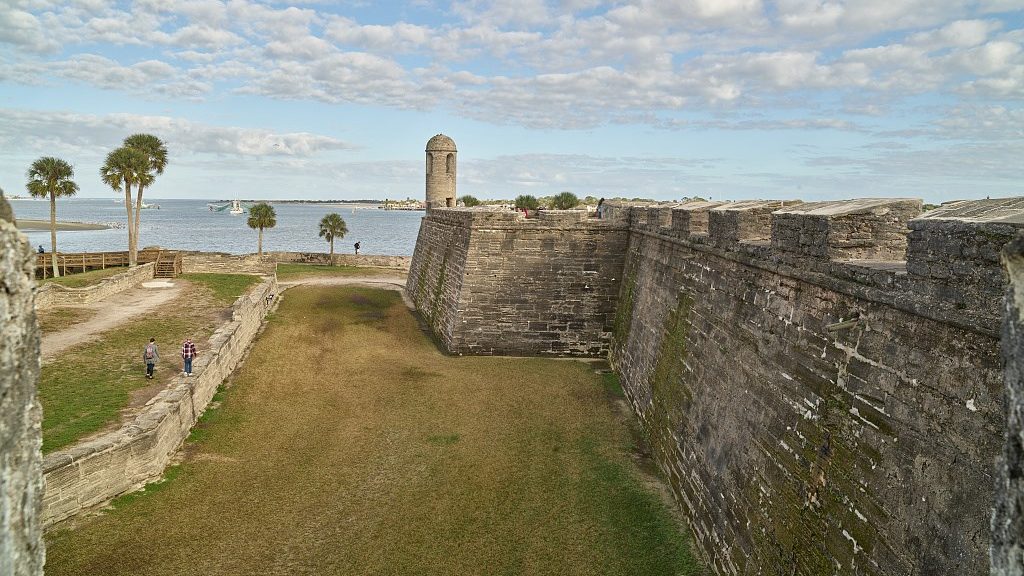
In the 1700s, the Spanish government stationed Irish and Scottish expatriate soldiers who couldn’t return to their homeland. Several of these military men rose up through the ranks to become Governors of Spanish Florida.
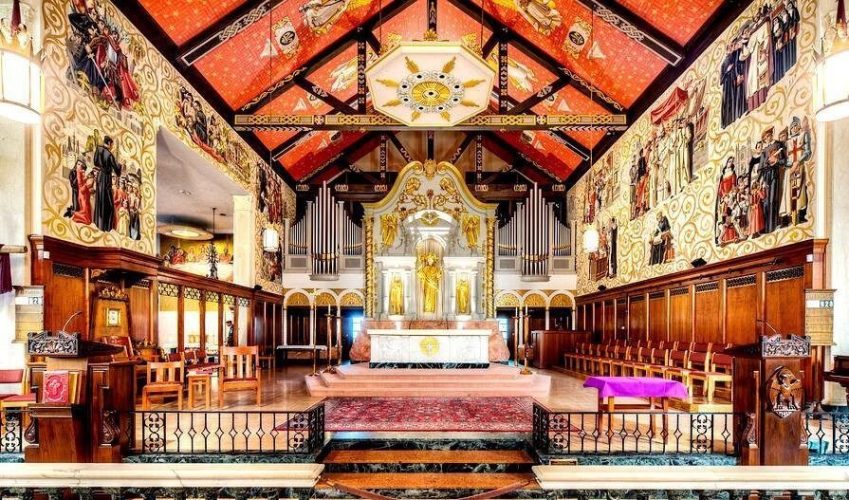
Located along the Plaza de la Constitucion, St. Augustine’s “Central Park,” the Cathedral-Basilica is an architectural masterpiece and is home to America’s first parish.
Irish priests Miguel O’Reilly and Thomas Hassett supervised the construction of the cathedral from 1793 to its completion in 1797. While it is still actively used as a place of worship, the church is open year-round to the public for touring and musical performances.
Guides are available Monday – Friday and Sunday at 1 PM to answer questions and share information about the Celtic heritage, art, and architectural elements of the cathedral. Visitors often bask at the bright ceiling, detailed tiled floor, and its many ornate glass windows and paintings.
A virtual tour is also available.
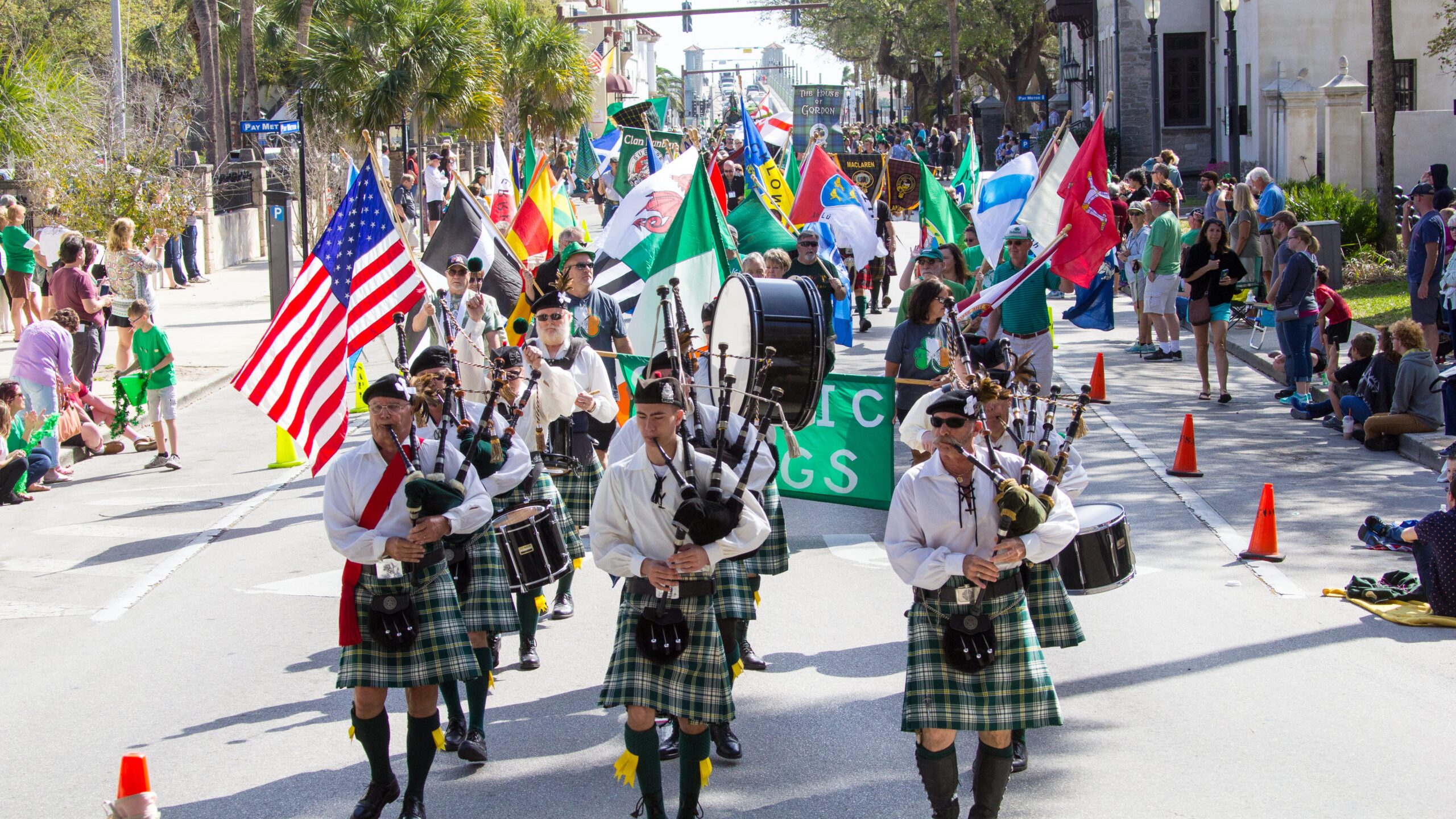
The world’s first St. Patrick’s Day parade took place in St. Augustine in the year 1600.
Under the direction of Padre Ricardo Artur, a former Irish soldier then vicar of St. Augustine’s parish, a parade in the Spanish town was held in the saint’s honor. Records show that the people “expended gunpowder in honor of [St. Patrick]” in 1600.
A second account a year later states that “city residents processed or paraded through St. Augustine’s streets in honor of St. Patrick.” It was the first St. Patrick’s Day parade in what would become the U.S., beating out Boston by 136 years!
Today, the parade features over 1,000 participants, including 50 units plus Clans and athletes from the Highland Games, floats, marching bands, bagpipes and drums, horse-drawn carriages, military units, local community groups, and more.